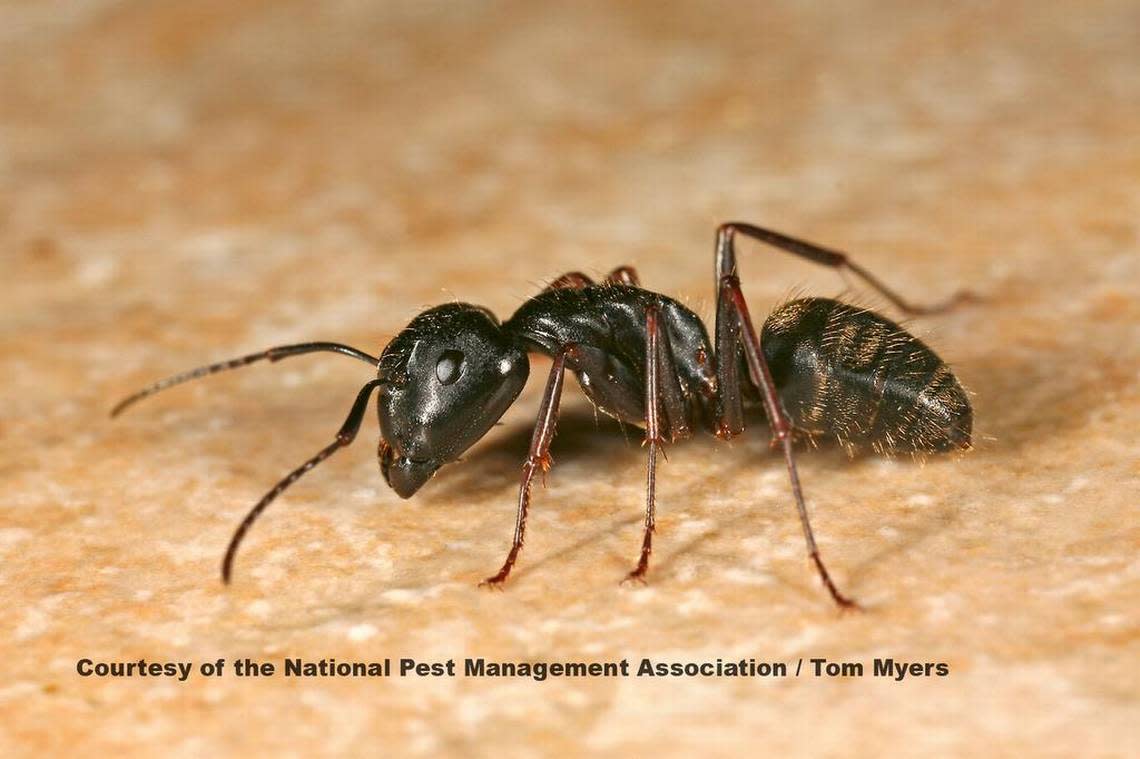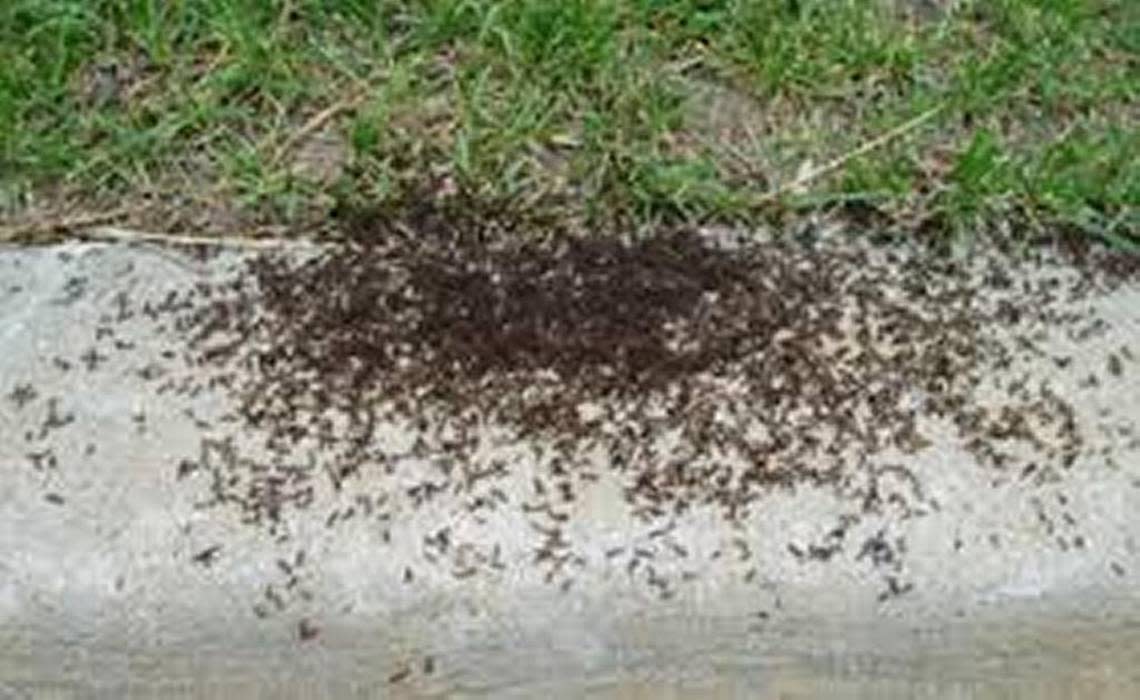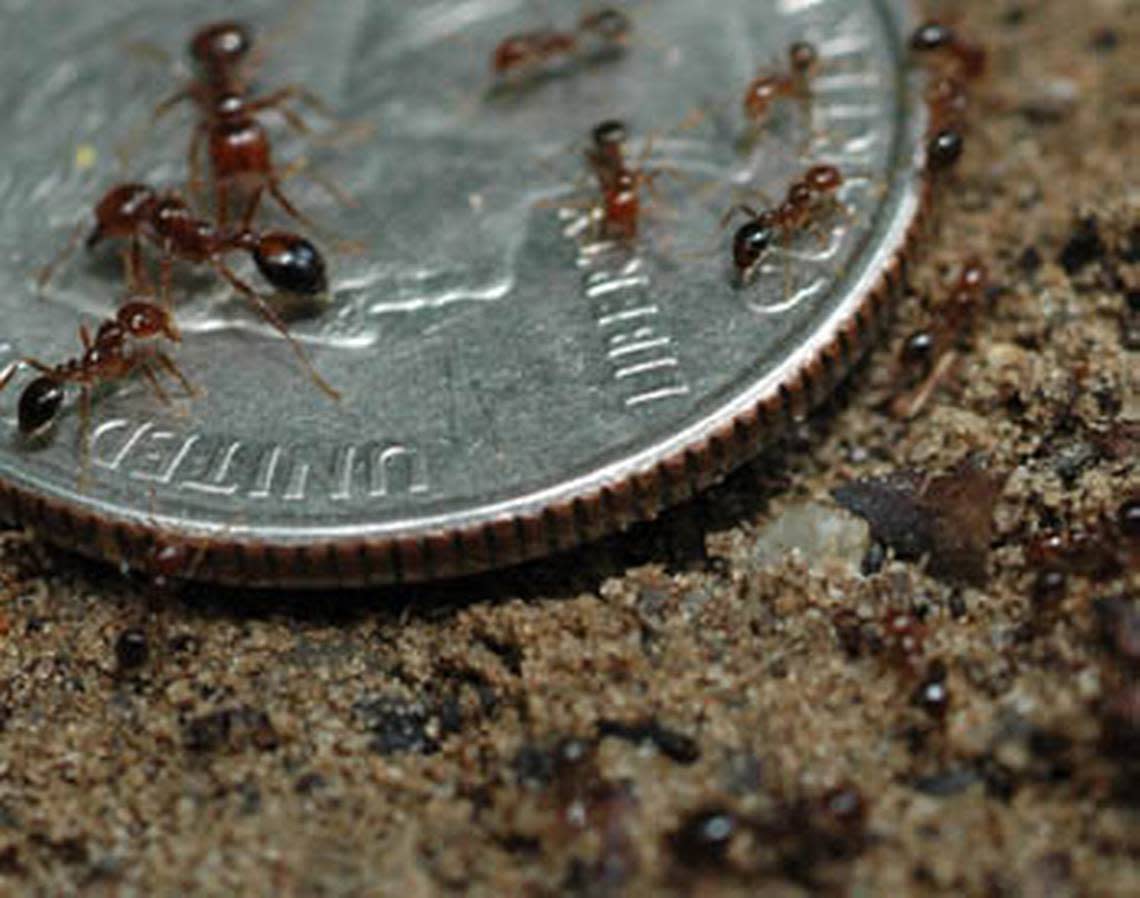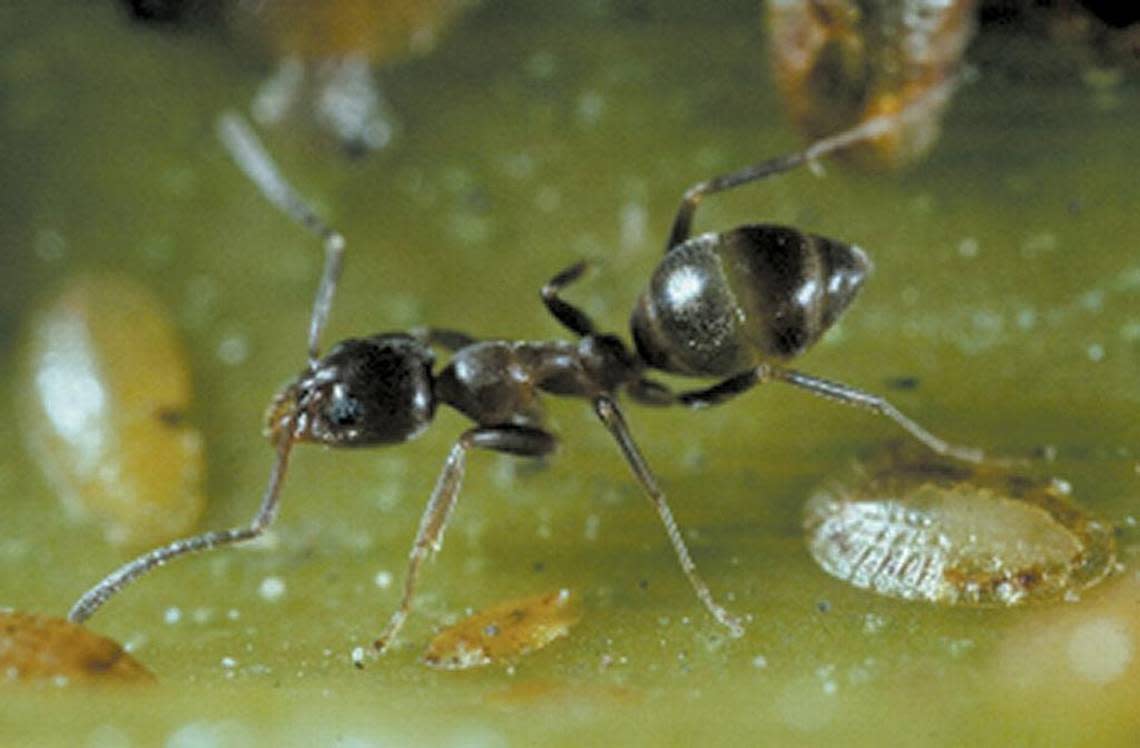4 SC ant species coming for your home soon if they haven’t already. How to keep them out
Summer in South Carolina is a time for swimming, fishing, barbecuing and beach trips.
It’s also a time for ants. Oh, so many ants.
Whether they build colonies in your yard or sneak into your home, ants can be tough to deal with, particularly since you’re likely to face more than one kind of the six-legged pest over the summer months. Here are four of the most common ant species South Carolinians will likely face over the summer and how to keep them out of yards and homes.
Carpenter ants
Carpenter ants are among the most common of ant species in South Carolina. According to Clemson Cooperative Extension, while carpenter ants are more of a problem in the Northwest and Northeast, they can still be a nuisance and a serious structural pest across the Southeast.
It is a large ant, measuring between 4 to 13 millimeters long. The workers are black or black and red. To discern them from other species, look for their rounded thorax and the one node on their waist.
They can be a big problem for homes, given their enjoyment of digging tunnels through wood to make nests.

How to get rid of them
Carpenter ants can be controlled several ways using insecticides.
“One thing to remember is that the earlier a carpenter ant problem is handled, the less insecticide will be needed to control it,” Clemson Cooperative Extension states.
The treatment method will depend on where the ants are found. If the ants are already in wood or walls, one treatment is to drill small holes in the wood, then inject a dust or aerosol insecticide. An outside treatment with insecticide spray can be used if the ants are still coming into the home from the outside.
Non-chemical control
It’s important to remember that carpenter ants are mainly attracted to moist wood, so be sure to fix any possible sources of excess moisture found in the home. To further minimize the chances of home infestation, remove any tree limbs that are close to or touching your house.
Pavement ants
Native to Europe, pavement ants, also called sugar ants, are another common species in the state. They are dark brown or black and grow between 2 and 4 millimeters long. You can recognize them by the grooves on their heads and the two spines on their backs. They also have two nodes on their waist area.
These are the kinds of ants you’ll mostly see around your picnic table. However, they also like to find their way into homes to find food sources. They are particularly drawn to food that has been left out.

How to get rid of them
The University of California Agriculture and Natural Resources statewide integrated pest management program recommends using baits to remove pavement ant infestations.
Sweet baits like boric acid and protein baits attract pavement ants.
Place baits near trails and other spots where ants will likely encounter them.
Place the bait outdoors. Indoor baiting may attract more ants into the home.
Non-chemical control
Keep your home clean and address food messes as they occur.
Eliminate sources of water buildup indoors.
Seal holes, gaps and cracks in your exterior foundation using caulk.
Ensure your door and window screens are in good condition.
Install door sweeps under doors leading out of your home.
Fire ants
Fire ants have been slowly spreading across South Carolina since they were introduced in the 1960s. They are reddish-brown with darker abdomens and grow between 2 and 6 millimeters. They also feature two nodes and 10 segments on their antenna.
The big problem with fire ants is unlike other species, they can be particularly aggressive and have particularly painful stingers.

How to get rid of them
According to Aiken Pest Control, the longstanding solution to ridding yourself of fire ants is the use of bait.
“Bait works because it is taken and shared with the colony,” Aiken Pest Control states. “When the colony dies, the fire ants are no longer able to spread around the yard and continue to colonize.”
The bait can be used for targeting specific mounds or for large areas. Also, the baits used must be appropriately selected and placed for effective control.
Argentine ants
Argentine ants likely were first introduced to the U.S. in the 1800s by way of coffee ships from Brazil and Argentina, Clemson Cooperative Extension states. Today they can be found in most of the southern states and California.
Argentine ants are light to dark brown in color and have a one-segmented petiole, which is between the thorax and abdomen. They don’t have stingers, but they may bite if provoked. Also, these ants will give off a musty odor when crushed.
They’re not particularly picky eaters and will feed on sweets, meats, fruits, eggs, dairy products and vegetable oils.
They’re also one of the most persistent and troublesome of home-invading ants, Clemson Cooperative Extension states. Homeowners may have infestations yearly unless control is thorough.

How to get rid of them
You can use insecticide sprays directly on the nests or around the home. Just make sure all the nests are treated. To find all the nests, follow trails from their food source.
Baiting is the preferred method indoors for dealing with Argentine ants. Place the bait at the point closest to where ants are entering your home. Do not disturb or spray the ants around the bait.
Non-chemical control
Eliminate ground clutter such as piles of construction materials, boards, sheets of tin or plywood from the yard that could serve as protection.
Limit their access to home by sealing cracks.
Keep vegetation around the home to a minimum.
Do not leave food, especially sweets, sitting on counter tops uncovered.
